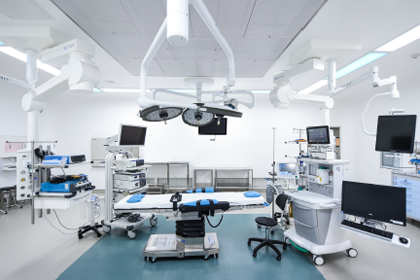Search
Related Articles
What is a trigger point?
Trigger points are often called muscle knots. They are a tight lump in an area of muscle that can cause pain.
Where might trigger points occur?
You may have trigger points in your neck, shoulders, or upper and lower back. You may have them in your head or jaws. You may also have them in your buttocks or legs. You may only have one trigger point or you may have many in the different areas of your body.
What causes trigger points?
Trigger points may be caused by muscle injury. They may also form if you use the muscle too much, or you have repeated minor stressto the muscle. Minor stress may result from things such as poor posture and sleep position. Emotional stress may also cause trigger points. This can happen when stress makes you tense certain muscles, such as those in your shoulders and neck.
What are the signs and symptoms of trigger points?
• Pain: Trigger points can cause deep, aching pain. They may cause pain only when the trigger point is pressed. They may also cause constant pain, or pain during movement of the muscle. Pain may spread away from the trigger point. Pain may also occur in another part of your body. For example, a trigger point in your neck may cause eye pain. This is called referred pain
• Decreased range of motion: Range of motion is how much you can move a joint, such as your shoulder or knee. A trigger point can shorten a muscle. This can reduce the range of motion of a nearby joint
• Muscle weakness: The pain caused by a trigger point may weaken the muscle
• Other signs and symptoms: You may be dizzy or hear ringing in your ears. Your skin over the trigger point may turn red. Your skin may tingle and be sensitive to the touch. Trigger points may also cause your mouth may make extra saliva and your eyes may make extra tears
How are trigger points diagnosed?
Your doctor will ask about your health history. He will also ask you to describe your pain. You may need certain tests to rule out other conditions. Your doctor will look for a hard lump in your muscle. He may press on or squeeze the tissue over this lump. He will do this to see if the muscle twitches(quick movements) and if you have any pain. These signs help your doctor know if you have a trigger point. You may also need tests to make sure your pain is not related to a more serious condition. Tests include:
• X-ray: This is a picture taken of your bones and tissues to look for possible causes of your pain
• Computed tomography scan: This is also called a CT scan. A special x-ray machine uses a computer to take pictures of your body. It may be used to look at your bones and muscles. You may be given dyein an IV before the pictures are taken. The dye may help your doctor see the pictures better. People who are allergic to iodine or shellfish (lobster, crab, or shrimp) may be allergic to some dyes. Tell your doctor if you are allergic to shellfish, or have other allergies or medical conditions
• Magnetic resonance imaging: This test is called an MRI. During the MRI, pictures are taken of your body. An MRI may be used to look at your bones and muscles. You will need to lie still during the MRI.Neverenter the MRI room with any metal objects. This can cause serious injury
How are trigger points treated?
• Trigger point injections: A doctor puts a needle through your skin and into the trigger point. Saline (salt solution), pain relievers, or other medicines may be pushed through the needle into the trigger point. Doctors may also use only a dry needle (no medicine). When the needle is removed, the muscle area is gently stretched
• Spray and stretch: A cooling substance is sprayed on your skin over the trigger point. This helps relax the muscle, which is then gently stretched
• Massage: Your doctor may massage the muscle that contains the trigger point. He may also perform compression therapy. This is when he presses on the trigger point until the muscle relaxes. These methods help relax and stretch the muscle
• Transcutaneous electrical nerve stimulation: This is also called TENS. During TENS, pads are placed on the trigger point. They may also be placed where you have referred pain. The pads are attached to a device that sends electrical signals into your body. These signals help reduce pain
• Physical therapy: A physical therapist helps you with special exercises. These exercises help gently stretch your muscles and relieve pain. Your therapist may also help you find the causes of your trigger points, such as poor posture
• Medicines: Your doctor may suggest pain medicines such as ibuprofen. He may also prescribe medicines that relax your muscles
What are the risks of treatment for trigger points?
You may bruise or get an infection in the area your trigger point injections (shots) were given. The shots may cause you to feel faint. You may also be sore where you got the shot. The needle may cause muscle damaged. A collapsed lung is a risk if you get the shot near your lungs.
How can I manage my trigger point pain?
Follow all instructions your doctor gives you. He may tell you to do the following:
• Stay active after you have trigger point injections. Gently move your joints through their full range of motion during the first week. Avoid strenuous activity for 3 or 4 days
• Do regular stretches of the trigger point muscle. Place gentle pressure on the trigger point, and then stretch the muscle. Ask your doctor for more information about how to stretch and apply pressure
• Apply ice or heat to the pain site. A bag of ice covered with a towel or a heating pad can help ease pain for a short time. Apply ice or heat as directed
When should I call my doctor?
• Your pain has not improved after 2 to 3 sessions of trigger point injections
• You have questions or concerns about your trigger point pain
When should I seek immediate care or call 120?
You have chest pain or trouble breathing that starts suddenly
CARE AGREEMENT:
You have the right to help plan your care. Learn about your health condition and how it may be treated. Discuss treatment options with your caregivers to decide what care you want to receive. You always have the right to refuse treatment.
© 2017 Truven Health Analytics LLC All illustrations and images included in CareNotes® are the copyrighted property of A.D.A.M., Inc. or Truven Health Analytics.
Click the link for more information on Anesthesiology Clinical Services
Click the link for more information on Orthopaedics and Sports Medicine Clinical Service
Click the link for more information on Rehabilitation Clinical Service











